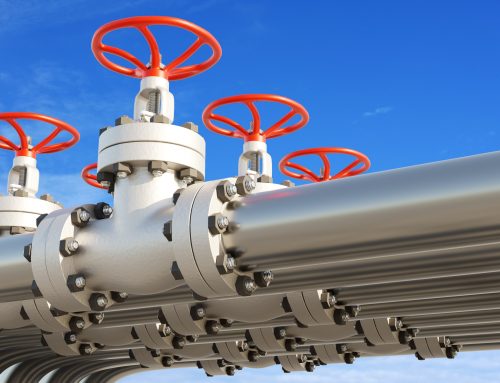Two years after the launch of the renewed Global Approach to Migration and Mobility (GAMM) important achievements in strengthening dialogue and cooperation are reported, while recognizing that more should be done to make further progress.
What progress has been made to better manage migration flows and promote mobility in a secure environment? In a report adopted today the Commission looks at the main developments within the EU’s external migration policy in 2012 and 2013. Two years after the launch of the renewed Global Approach to Migration and Mobility (GAMM) important achievements in strengthening dialogue and cooperation are reported, while recognizing that more should be done to make further progress.
Efforts to address the realities of an increasing international mobility must match the needs and priorities of all stakeholders. This requires a better use of existing tools, such as Mobility Partnerships and common visa rules. There is also a need to reinforce the participation of EU Member States where possible when implementing EU policies.
“Well-managed migration can be truly beneficial for everybody involved, migrants and countries alike. Our success largely depends on our dialogue and cooperation with non-EU countries and international organisations. Mobility Partnerships, visa facilitation coupled with readmission agreements and the common visa rules remain important policy instruments. But we should do even more to secure economic growth and competitiveness and to address jointly with non-EU countries the downsides of migration, such as trafficking in human beings and smuggling of migrants“, said Commissioner for Home Affairs Cecilia Malmström.
The Mobility Partnerships have proven to be useful tools for addressing migration and asylum issues in a mutually beneficial way. They establish a set of political objectives and provide a structure for discussions and cooperation. So far, Mobility Partnerships have been concluded with six countries: Moldova (2008), Cape Verde (2008), Georgia (2009), Armenia (2011), Morocco (2013) and Azerbaijan (2013). Discussions on a Mobility Partnership with Tunisia have been concluded (November 2013) and its signing is imminent. Furthermore, discussions have begun with Jordan (December 2013).
Altogether, in the period from 2012-2013, the Commission has supported more than 90 migration-related projects with more than € 200 million in all regions of the developing world. In addition, EU Member States have invested further financial resources to the implementation of the GAMM.
More work should also be done with regard to refugee protection and human rights. For instance, the European Asylum Support Office (EASO) could play a greater role in improving asylum and reception capacities in non-EU countries, including within the framework of Mobility Partnerships. There is also room to improve the use of Regional Protection Programmes, in particular through longer-term engagement and funding.
Better coordination of resettlement activities at EU level and amongst Member States would allow for more efficient and quicker responses to crisis situations. Increased EU funding should also be available to support more resettlement/humanitarian admission places under the new Asylum and Migration Fund (2014-2020).
Taking the GAMM to the next level
The existing external migration and asylum policy and tools could however be better exploited, including to enhance the attractiveness of the EU and strengthen its economy.
The issue of labour migration will become even more prominent in the coming years andthe role of the Mobility Partnerships could be emphasised in this regard (e.g. by facilitating the exchange of students or professionals, enhancing migration management capacities in non-EU countries, introducing circular migration programmes, strengthening social protection of legal migrants, addressing where appropriate portability of social rights, etc.).
Facilitating the issuance of short-term visas can produce positive effects for development in non-EU countries such as improving business opportunities and trade ties with the EU, and strengthening people-to-people contacts. Furthermore, the potential offered by the EU visa policy should be used to the fullest to foster economic growth and cultural exchanges. In the coming weeks, the Commission will propose amendments to the Visa Code to further facilitate travel of legitimate travellers while ensuring a high level of security of the EU.
Cooperation on prevention and combatting irregular migration has deepened in recent years. Dialogues, exchange of information and joint actions to fight trafficking in human beings and smuggling of migrants have been initiated and implemented. Further initiatives are foreseen, as already announced in the report of the Task Force Mediterranean.
Background
The Global Approach to Migration and Mobility (GAMM) is, since 2005, the overarching framework of the EU external migration and asylum policy and defines how the EU conducts its political dialogue and operational cooperation with non-EU countries. It is based on clearly defined priorities which reflect the strategic objectives of the EU, and is embedded in the EU’s overall foreign policy, including development cooperation.
The GAMM aims to foster the dialogue and cooperation with non-EU partner countries in four areas: better organising legal migration and fostering well-managed mobility; preventing and combating irregular migration and eradicating trafficking in human beings; maximising the development impact of migration; and promoting international protection and enhancing the external dimension of asylum.
The GAMM is implemented through regional and bilateral policy dialogues (with policy tools such as Mobility Partnerships); legal instruments such as visa facilitation and readmission agreements; operational support and capacity building; as well as a wide range of programme and project support (available to numerous stakeholders, including civil society, migrant associations and international organisations).
Useful Links
- Cecilia Malmström’s website
- Follow Commissioner Malmström on Twitter
- DG Home Affairs website
- Follow DG Home Affairs on Twitter
Report on the implementation of the GAMM 2012-2013



